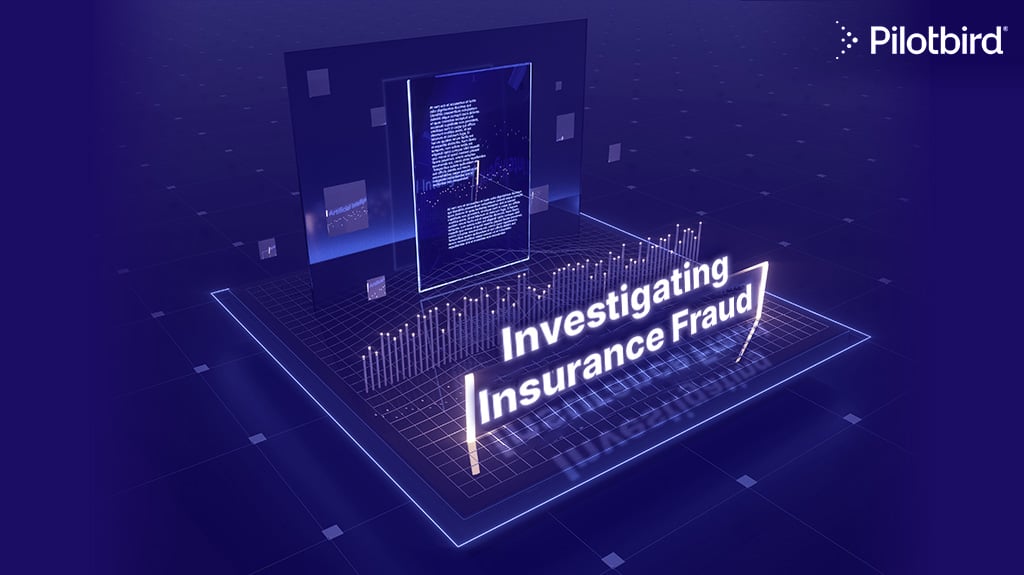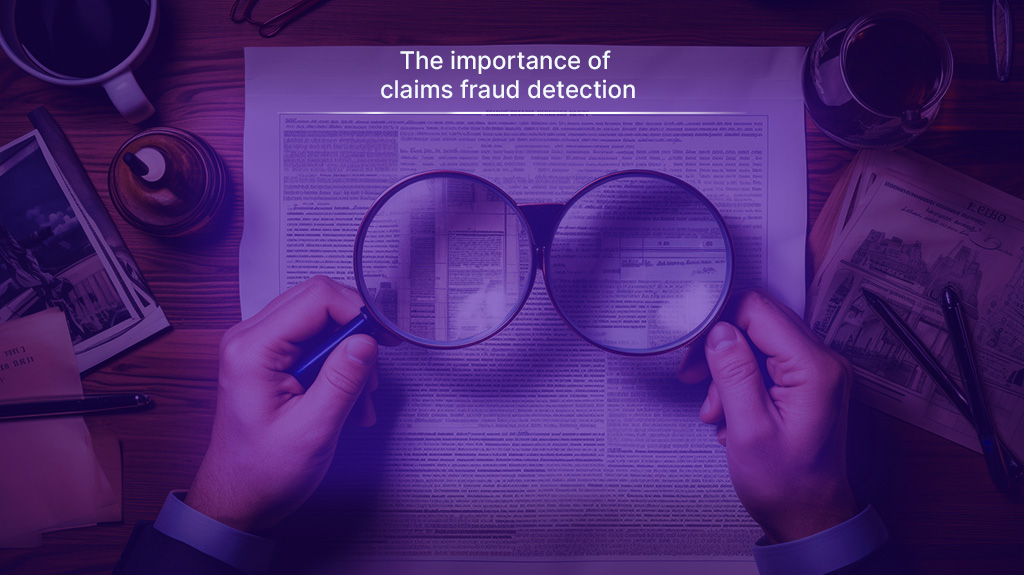In 2022, a case of insurance fraud occurred in Palm Springs, CA, where an insurance agent was apprehended and faced charges of elder abuse, grand theft, and identity theft. The agent targeted an affluent elderly client, diverting more than $75,000 from the victim's accounts over several years. Additionally, the agent misappropriated clients' premium funds intended for the insurance company.
Insurance fraud schemes like this not only impose a significant financial burden on the economy, costing billions of dollars annually, but they also have a detrimental impact on individuals and families. On average, American households face additional expenses of $400 to $700 per year due to insurance fraud.
Moreover, the human toll resulting from a diminished quality of care and potential loss of life further exacerbates the overall impact of insurance fraud.
Investigating insurance fraud requires meticulousness, persistence, and unwavering dedication. In this blog post, we will delve into these aspects, highlighting the importance of conducting a comprehensive investigation and the role of technology in insurance fraud investigations.
Best Practices and Techniques for Investigating Insurance Fraud
Insurance fraud is a pervasive issue that demands effective investigation techniques to combat. Insurance companies and investigators are crucial in identifying fraudulent activities and holding perpetrators accountable.
By following best practices, investigators can ensure a thorough investigation that upholds the law and provides accurate findings.

Follow the Law
When investigating insurance fraud, adhering to legal requirements and regulations is essential. Therefore, investigators must familiarize themselves with relevant laws and procedures to ensure that their actions are within the boundaries of the law. It includes obtaining proper authorization for accessing records or conducting surveillance, respecting individuals' rights, and maintaining confidentiality as required by law.
Conduct an Initial Assessment
Before diving into a full-scale investigation, conducting an initial assessment of the case is crucial. It involves gathering preliminary information about the claim, assessing its potential for fraud, and determining the scope of the investigation.
By conducting a thorough initial assessment, investigators can prioritize their efforts, allocate resources effectively, and develop an appropriate investigative strategy.
Plan the Investigation Well
A well-planned investigation is more likely to yield successful results. Therefore, investigators should develop a detailed investigation plan that outlines the objectives, tasks, timelines, and allocation of resources. This plan should consider various factors, such as the nature of the fraud, available evidence, and potential challenges.
A comprehensive plan ensures that the investigation proceeds systematically and helps investigators stay focused on the key areas of inquiry
Before commencing an investigation, it is crucial to consider certain key questions:
- Who should be interviewed?
- What is the recommended sequence for conducting those interviews?
- What supporting documents should investigators collect?
- Are there any other allegations against the subject?
- Which entities should be notified about the investigation, and what is the recommended approach for informing them?
Perform Great Interviews
Interviews are crucial in gathering information and evidence during an insurance fraud investigation. Conducting effective interviews requires excellent communication and interviewing skills. Investigators should approach interviews with a structured and systematic approach, ensuring they gather relevant information while maintaining objectivity.
Active listening, asking open-ended questions, and probing for details are essential to elicit accurate and valuable information from witnesses, claimants, and other involved parties.
Understand the Evidence
A thorough understanding of the evidence is vital for investigators to build a strong case against fraudulent activities. Therefore, investigators should carefully analyze and evaluate all available evidence, including documents, records, financial transactions, and witness statements.
By examining the evidence closely, investigators can identify inconsistencies, patterns, and anomalies that may indicate fraud. In addition, collaboration with forensic experts, medical professionals, and other specialized professionals can provide additional insights and strengthen the investigation.
Report the Findings
Reporting findings is a crucial final step in an insurance fraud investigation. A comprehensive report serves to demonstrate that the investigation was conducted in a fair, thorough, and lawful manner.
A well-prepared investigation report should include the following components:
- Understanding of the allegation
- Investigation steps
- Documentation and material evidence
- List of interviewees
- Summary of interviews
- Conclusion on the allegation
The Importance of Conducting a Thorough Investigation
Conducting a thorough insurance investigation is of paramount importance for various reasons. Whether you are an insurance company, a policyholder, or a claims adjuster, a comprehensive investigation ensures fairness, accuracy, and trust in the insurance process.
Here are a few key reasons why conducting a thorough insurance investigation is crucial:
Accurate Claim Evaluation
Investigations ensure that claims are evaluated accurately, preventing fraudulent or exaggerated claims and safeguarding insurers' financial stability.
Fraud Detection and Prevention
Thorough investigations help identify fraudulent claims, reducing financial losses for insurers and maintaining affordable premiums for policyholders.
Risk Mitigation
Investigations identify risk factors, allowing insurers and policyholders to implement measures that minimize future claims and associated costs.
Legal Compliance
Investigations ensure compliance with legal and regulatory requirements, promoting fairness, transparency, and trust in the claims process.
Customer Satisfaction and Retention
Comprehensive investigations demonstrate a commitment to fairness, enhancing policyholders' confidence and strengthening their relationship with the insurer. In addition, satisfied customers contribute positively to the insurer's reputation and may refer others.
The Role of Technology in Supporting Insurance Fraud Investigations
Fraud, whether detected or undetected, poses a significant concern as more individuals transition to digital lifestyles.
A recent article addressing the global insurance industry sheds light on the substantial financial impact of insurance fraud. The article reveals that insurance fraud amounts to a staggering $80 billion annually in costs for consumers in the United States alone.

Furthermore, it estimates that fraudulent activities related to workers' compensation insurance lead to $30 million in annual losses for insurers and employers.
Technology offers numerous ways to enhance fraud detection. Let's explore a few key methods:
Blockchain
Blockchain technology supports insurance fraud investigations by providing a secure and transparent system for recording and verifying transactions. In addition, it enables the creation of immutable digital records, making it difficult for fraudsters to manipulate or alter data.
By using blockchain, insurers can ensure the integrity of policyholder information, claims data, and transactions, enhancing the accuracy and trustworthiness of their investigations.
Anomaly Detection
Anomaly detection techniques leverage advanced algorithms and machine learning to identify unusual patterns or behaviors that may indicate potential fraud. These systems can detect discrepancies and outliers that human investigators might miss by analyzing vast amounts of data, such as policyholder profiles, claim histories, and industry benchmarks. This technology helps insurance companies flag suspicious activities promptly, enabling them to investigate and mitigate fraud more effectively.
Predictive Analytics
According to MarketWatch, the Global Predictive Analytics market is projected to reach $34.1 billion by 2027. With an initial valuation of approximately $6.9 billion in 2019, the market is expected to witness a robust growth rate of over 22.17% during the forecast period of 2020-2027.
Like anomaly detection, predictive analytics trains artificial intelligence and machine learning algorithms using historical data. This training allows the algorithms to predict future events or incidents. As a result, organizations can maintain a proactive approach by leveraging predictive analytics, anticipating outcomes rather than merely reacting to them.
Speeding up Claims Processing with Chatbots
Chatbots, powered by artificial intelligence (AI), can expedite claims processing and contribute to fraud investigations. In addition, these virtual assistants can interact with policyholders, collect necessary information, and guide them through the claims submission process.
Chatbots equipped with natural language processing and machine learning algorithms can detect potential signs of fraud or discrepancies in claim reports, effectively notifying investigators of fraudulent activities. Moreover, chatbots can streamline the claims workflow, reducing manual errors and accelerating the investigation and resolution process.
In conclusion, insurance fraud remains a significant challenge. Still, insurance companies can strengthen their fraud detection capabilities by adopting best practices and cutting-edge solutions like Pilotbird fraud monitoring services and effectively combat fraudulent activities. These services offer advanced technological tools and analytics that enable insurers to detect suspicious patterns, identify potential fraudsters, and take proactive measures to mitigate risks.
Pilotbird's expertise in fraud detection and prevention can significantly enhance an insurer's ability to identify and investigate fraudulent claims, ultimately saving valuable resources and ensuring fair treatment for policyholders.
By working together and staying vigilant, we can create a more secure and trustworthy insurance industry for everyone involved. Explore our blog to delve deeper into the world of fraud monitoring.
References
"How to Conduct Effective Insurance Fraud Investigations: Your Ultimate Guide." Case IQ, 2022
https://www.caseiq.com/resources/the-ultimate-guide-to-insurance-fraud-investigations/
"News & Events." Conroy Simberg, 2023
https://www.conroysimberg.com/blog/using-cybersecurity-in-insurance-fraud-investigations/#:~:text=Technology%20Allows%20for%20Predictive%20Analytics&text=Predictive%20analytics%20allows%20insurance%20companies,to%20weeding%20out%20fraudulent%20claims.
"Using technology to detect insurance fraud." Deccan Herald, 2022
https://www.deccanherald.com/business/business-news/using-technology-to-detect-insurance-fraud-1140598.html
"Role of Technology in Insurance Fraud Detection." CXOtoday, 2022
https://www.cxotoday.com/cxo-bytes/role-of-technology-in-insurance-fraud-detection/
"Background on: Insurance fraud." Insurance Information Institute, 2022
https://www.iii.org/article/background-on-insurance-fraud




Leave a Comment
Your email address will not be published. Required fields are marked *